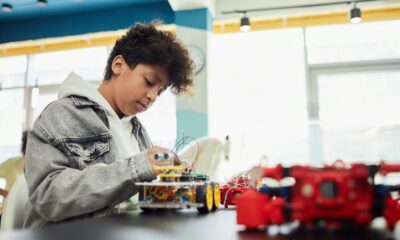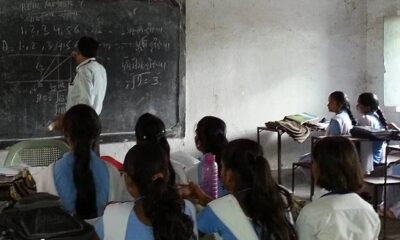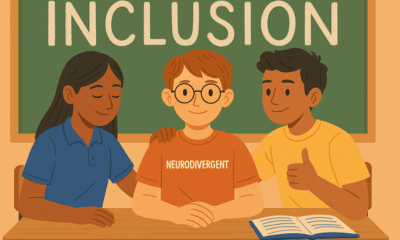News
Folk Fitness combines Dance with Fitness in a Scientifically Suitable Manner
Folk Fitness now has over 700+ fitness trainers across 18 tier I and tier-II cities in India with a presence in Australia. Aarti embraces all forms of Indian folk dances and has taken our Indian culture places. Her idea is unique, her passion inimitable and her love for fitness unmatchable.
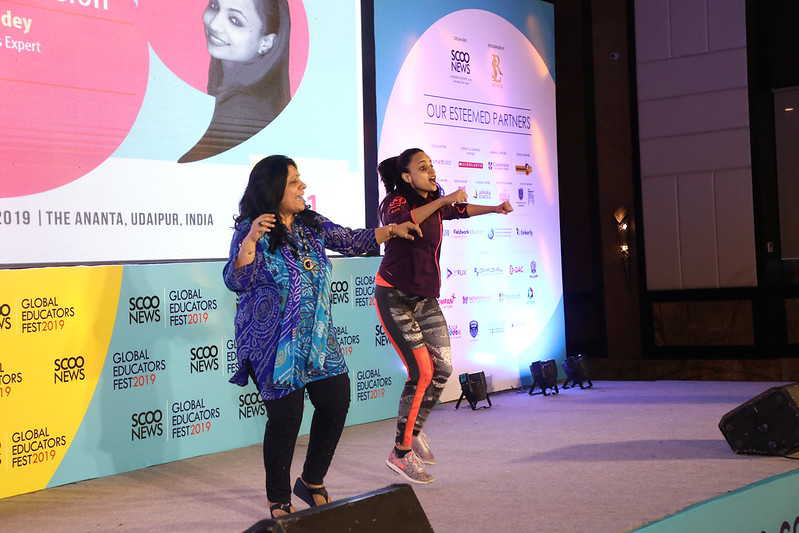
When Aarti Pandey enters a room, she manages to light it up in an instant with her aura and persona. A quirky young woman who is intensely passionate about Indian folk dances decided to take it to the next level by incorporating it as a way to improve fitness for all age groups of people. Her passion for dance and fitness gave birth to Folk Fitness, a strong platform for young girls, working women, homemakers, fitness enthusiasts and aspiring fitness trainers irrespective of gender, age and region to join the fitness regime.
Folk Fitness now has over 700+ fitness trainers across 18 tier I and tier-II cities in India with a presence in Australia. Aarti embraces all forms of Indian folk dances and has taken our Indian culture places. Her idea is unique, her passion inimitable and her love for fitness unmatchable. Aarti manages to get everyone – the young and the old, tapping their feet and jumping out of their chairs to follow her dance moves. In an exclusive with ScooNews, she explains how she does it with so much ease and style.
How did you come up with the idea of integrating Folk Dance with Fitness?
All three of us partners of Folk Fitness are sports and fitness enthusiasts. We left our corporate careers to spread and inspire fitness lifestyle across age groups. We were in the fitness industry for three years before we even thought of Folk Fitness. We had three key observations as fitness entrepreneurs and enthusiasts – every fitness concept/ programme was from the western world, there were a need and demand for group workout programmes and there were no structured programmes for school children. This prompted the thought of creating a group workout programme which is holistic and effective and will connect and motivate people across age groups to take up a fitter lifestyle. I had a strong folk dance background and experience and a good understanding of functional movements in folk dance steps and the natural connect to folk music across age groups. Thus, Folk Fitness started to take shape. We pursued extensive research and development to create India’s First Holistic Dance Fitness programme on authentic Folk Music/Songs: Folk Fitness – YUVA, NANHE and PRANAM programmes for different age groups.
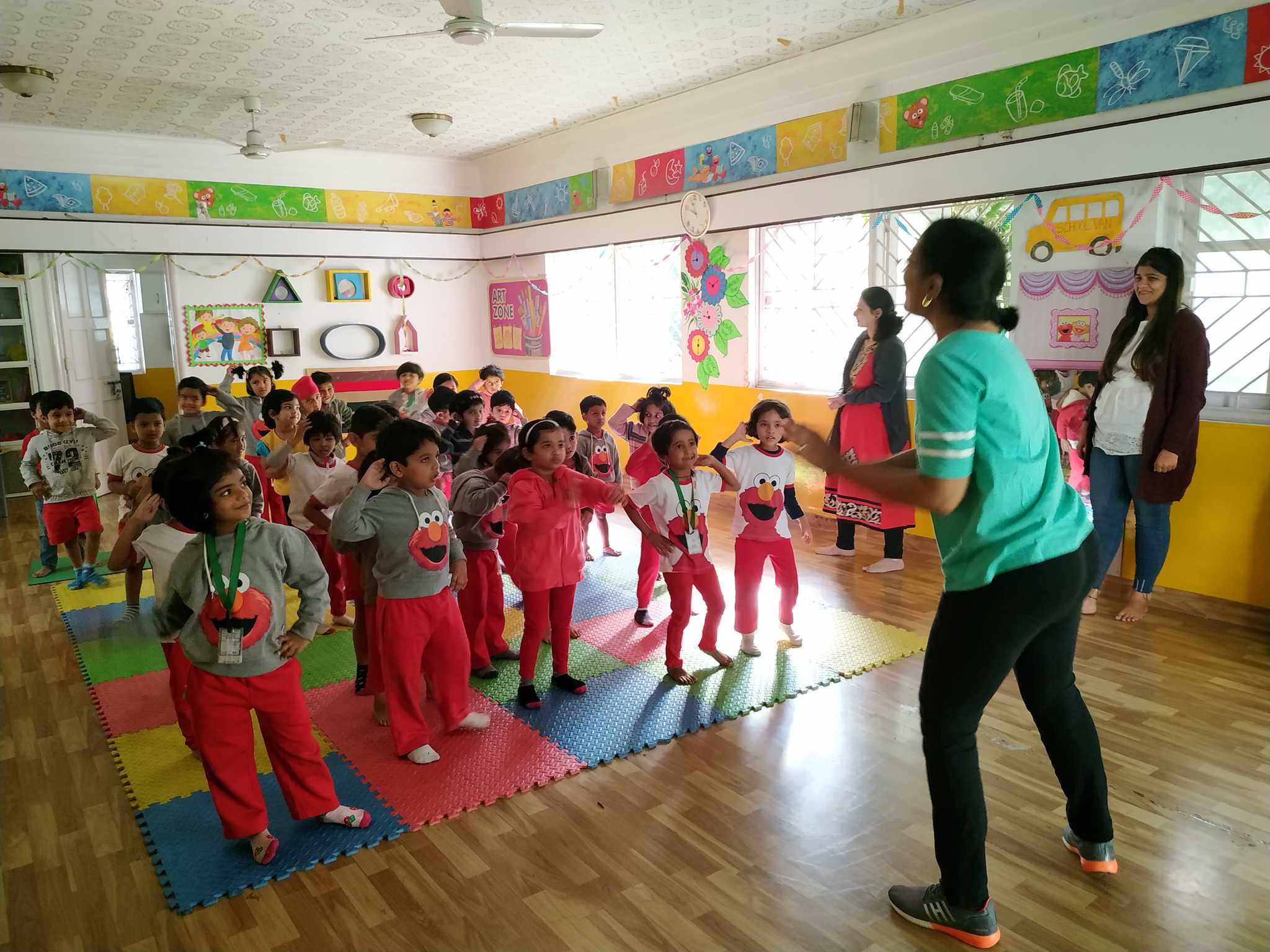
What forms of Folk Dance do you incorporate into your regimen and do you have any personal favourites?
There are 122 registered Indian folk and tribal dances, and many, many more which are not registered. The folk and tribal dances are our cultural heritage and they are influenced and inspired by the primary occupation of people, the topography of that region and the occasion/ celebration/ festival when these dances are performed. In essence, despite some commonalities, each folk dance has its own form. I love all folk dances but the most popular with enthusiasts are Bhangra, Garba, Bihu and Koli.
What were some of the challenges you faced while setting up a novel idea like Folk Fitness and how did you overcome them?
We did face some conditioned biases/ opinions like folk music is slow or that people prefer Bollywood/ Western music and this is just dance class. We overcame these by conducting and publishing a third-party case study for impact, delivered hundreds of education and experience workshops at events/ fitness centres/ schools and got the programmes accreditation from the Aerobics and Fitness Association of America, National Academy of Sports Medicine and Fitness and Early Childhood Association. We also have a special mention in the LIMCA book of world records.
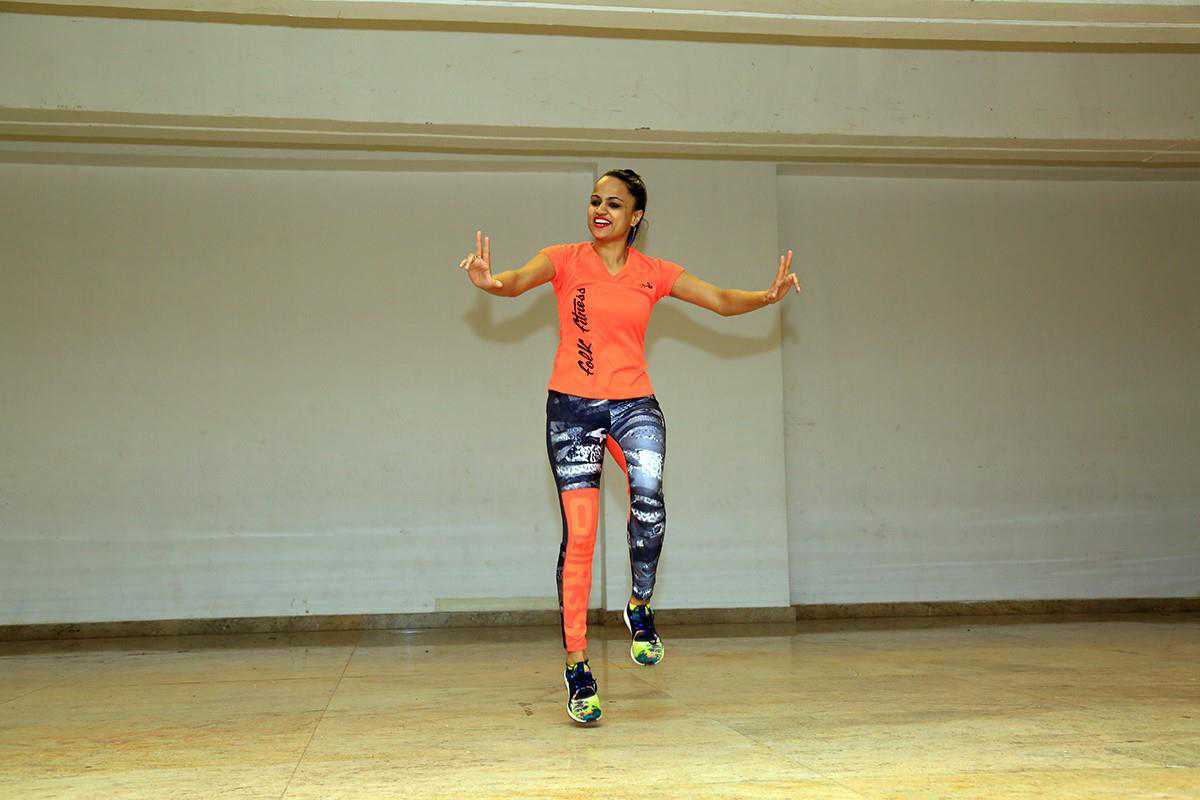
How has the response been to Folk Fitness, especially from Schools?
Overall, we have had very positive responses from schools. We have more than a thousand instructors certified across India for conducting Folk Fitness YUVA sessions. The response is very encouraging for NANHE school curriculum. We service more than 100 schools in Pune and Mumbai. We have also expanded outside Maharashtra, with 14 schools in Goa starting NANHE curriculum and recently we onboarded a prestigious boarding school at Dehradun. We are humbled and inspired that we are reaching out to more than 10,000 children currently.
What is the importance of Fitness for student’s Physical and Emotional Well-being?
In India, only 17 per cent of school-going children are engaged in at least 60 minutes of physical activity on a daily basis.
Regular physical activity helps develop a child’s movement skills. It also, of course, helps bones become stronger and builds a healthy heart and stronger muscles. Physical activity also helps a child maintain a healthy weight. Moderate-intensity exercise can even help to relieve some chronic (long-term) pain conditions by maintaining physical function and decreasing fatigue. Aside from providing general physical benefits, regular activity can also help ease symptoms of premenstrual syndrome in girls. This is because moderate exercise helps the body produce hormones called endorphins. These are natural painkillers that can ease abdominal and back pain as well as improve mood.
While it may not seem obvious, physical activity plays an important role in developing the brain and supporting essential mental functions. Research shows that regular moderate-intensity exercise can increase the size of the hippocampus, an area of the brain involved with learning and memory. Exercise also helps release growth factors, chemicals in the brain that affect the growth and survival of new brain cells as well as blood vessels in the area. Exercise leads to improved motor skills (such as hand-eye coordination), better thinking and problem-solving, stronger attention skills and improved learning. These combine to benefit school performance.
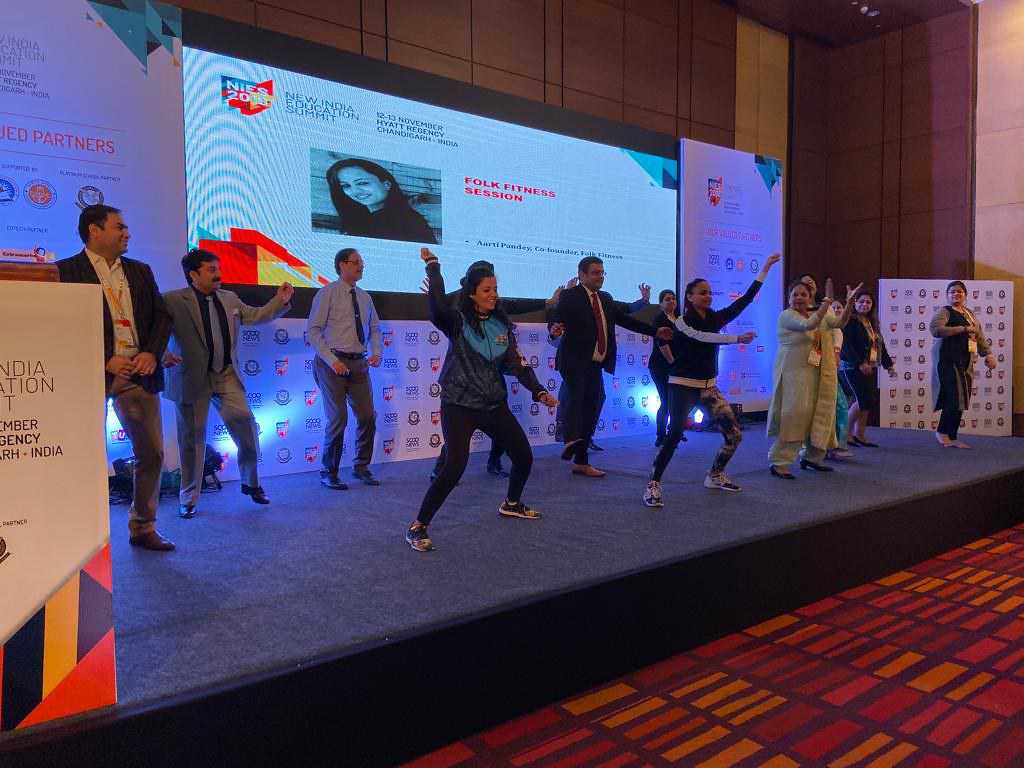
Physical activity can help greatly with maintaining mental wellbeing. The endorphins that the brain releases during exercise help to improve mood, energy levels and even sleep. Together, these positive effects help improve self-confidence and resilience. Through exercise, an anxious child can break the cycle by focusing on the demands of the physical activity, developing new skills and achieving a sense of accomplishment. If a child or teen is feeling lonely and unable to make friends, shared physical activities can give them a sense of belonging and companionship. When the child sees how fun it is to be able to dance, jump, walk, run, stretch and play they are more likely to want to continue enjoying being active throughout their life. Seeing and appreciating what their body can do, rather than how it looks, is a great way for a child to build a positive body image. It is important to help children develop this awareness as early as possible. The desire to look lean or muscular often becomes stronger during the pre-teen and teen years. The child is less likely to take any harmful paths towards a so-called physical ideal if they have a healthy perception of what ‘looking good’ means, and understand that it comes from healthy, balanced habits that start in their early years.
How is it achieved in a planned yet fun manner?
The NANHE curriculum design and execution has the central mantra of structure with maximum fun.
Movement on music is very appealing to children – they experience many positive emotions like enthusiasm, joy, euphoria etc. This is the reason why we choose the dance fitness approach for the curriculum. Queuing for steps in each class is done in an engaging and fun way using hand and sound signals which the kids follow and repeat. To add more fun and engagement for the pre-primary and primary age groups, we have puppet fitness characters stories and sing along NANHE anthem in every class. Another fun quotient is variety. Although repetition is very important for younger kids, we do keep a balance with variety, each routine is done for 8 weeks which has 7-8 folk dance-inspired steps. Also, for major festivals/occasions special theme-based classes are conducted e.g. Dandiya week.
Could you take us through the Fitness Programme briefly?
Design of the NANHE curriculum and each 35-minute class is focussed on holistic development of the child. The programme is based on "HIIT" (High intensity interval training) elements which enables children to utilise and channelise their energy in a positive way. The use of smaller muscle groups like fingers and wrists enhances fine motor skills and movements for bigger muscle groups like arms and legs which in turn help in the development of gross motor skills. A repetitive approach increases memory and the variation in steps helps in agility and strength. Cardio movements are used as energy busters to challenge the heart to reach the THR – (Target Heart Rate) and this helps highly energetic children to release their energy in a positive way. Each class has meditation, warm up, cool down and the NANHE anthem which help children to be more relaxed, focused and responsible for their own well-being. The soothing music during cool down and stretching segments have therapeutic value.
Younger children also become more aware of the Indian cultural through interesting stories of Folk Fitness animated characters – Sher Singh, Champion Champak and Chotta Chetak. Parents are engaged through weekly online fun assignments to practice and celebrate with their children. Children also demonstrate the Folk Fitness routines to parents/ teachers to celebrate the holistic development.
Do you plan to expand your horizons and take Folk Fitness to other countries too?
We are India-focussed for the next couple of years and as we strengthen our foundation, we will explore opportunities to serve as many lives across different countries.
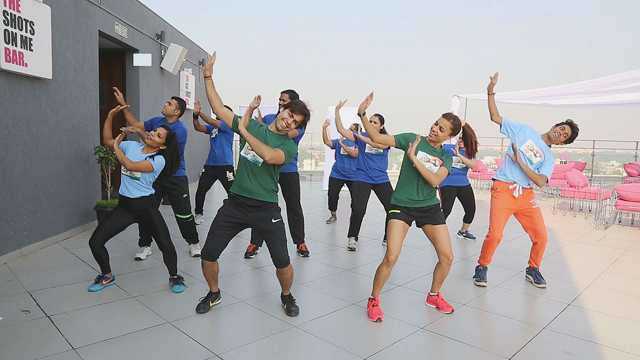
What are your plans going forward?
All our plans are single-mindedly focussed on holistic development and wellness of children.
● We are enhancing the NANHE curriculum based on experience and feedback e.g. puppet stories for better engagement of pre-primary children.
● We are engaging the ecosystem of children – physical and emotional fitness programmes for teachers and parents.
● We are developing an integrated curriculum for children e.g. Integrated STEAM BEATS curriculum.
● We are developing healthy habit creation and emotional fitness programmes for children.
Education
AI to Become a Core Subject from Class 3: India’s Big Leap Toward a Future-Ready Generation

In a landmark move to make India’s school system future-ready, the Department of School Education & Literacy (DoSE&L), Ministry of Education, has announced that Artificial Intelligence (AI) and Computational Thinking (CT) will be introduced as part of the school curriculum from Class 3 onwards, beginning in the academic year 2026–27.
The initiative marks a major step in preparing students for an AI-driven world, ensuring early exposure to technological literacy, ethics, and problem-solving. The curriculum, currently being developed through a consultative process with CBSE, NCERT, KVS, NVS, and States/UTs, will fall under the National Curriculum Framework for School Education (NCF-SE) 2023, in alignment with the National Education Policy (NEP) 2020.
A stakeholder consultation held on 29th October 2025 brought together education leaders, including Prof. Karthik Raman from IIT Madras, who heads the CBSE expert committee responsible for shaping the AI & CT curriculum. The focus is on designing a meaningful, inclusive framework that integrates AI not as an advanced elective but as a foundational skill — comparable to literacy and numeracy in importance.
Shri Sanjay Kumar, Secretary, DoSE&L, emphasised that AI education should be viewed as a universal skill closely linked to real-world applications. “Every child’s distinct potential is our priority. Policymakers must define minimum thresholds and evolve them with changing needs,” he said. He also stressed on teacher training as the backbone of successful implementation, with modules under NISHTHA, and resource materials being prepared by NCERT and CBSE.
The Ministry plans to release AI handbooks and digital resources by December 2025, followed by a grade-specific rollout supported by video-based learning materials and structured training.
By embedding AI education from the foundational years, India aims to nurture a generation that understands, creates, and applies technology ethically — transforming the vision of AI for Public Good into everyday classroom reality.
Education
Dharav Utsav to Celebrate Rajasthan’s Cultural Heritage and Local Talent

Education
Beyond the Syllabus: School Teachers’ Insights on Project-Based Learning

How classroom experiences are being reshaped through projects, inquiry, and authentic learning
As the classroom grows beyond the boundaries of textbooks and blackboards, so too does the role of the teacher, and the very meaning of learning. Project-Based Learning (PBL), once considered a niche innovation, is increasingly being embraced by educators across schools in India. But what happens when PBL moves from theory to practice?
To answer this, we turned to the people at the heart of the learning experience: teachers.
In conversations with educators from diverse school contexts, one theme was clear: PBL is not just a teaching strategy; it’s a transformation in how students learn, engage, and grow.
From Worksheets to Real-World Work: How PBL Differs from Traditional Homework
One of the clearest contrasts teachers observed was how PBL moves learning from repetition to relevance. Traditional homework often reinforces information through rote exercises. PBL, by contrast, asks students to apply their knowledge to solve problems, create products, or investigate issues that matter to them.
One teacher shared how using PBL to raise student awareness about water pollution was a hit in the class. Instead of just assigning problems, the students were made to create awareness posters, conduct surveys in their neighbourhood, and suggest solutions through group presentations. The teacher also noted how the students took the lead, and had an ownership over this project that they usually don’t showcase.
The shift from repetition to application fosters deeper engagement. Several teachers noted that students who previously struggled to stay motivated with homework showed renewed interest when asked to take on real-world challenges.
Changing Roles: Teachers as Facilitators, Not Just Instructors
Project-Based Learning also changes the role of the teacher, who went from being the sole source of knowledge to a guide who supports inquiry and exploration.
One common change teachers noticed was on how they had to let go of control in the classroom. Naturally, the students now had to work on projects on their own, and could only come to the teacher for guidance and help. The teachers noted that they helped their students ask the right questions, find credible sources, and evaluate their work, instead of completely placing the burden of learning on the teacher themselves.
This change isn’t always easy. It requires a shift in mindset and in many cases, rethinking how time is used in class. But most teachers agree: the shift is worth it. PBL has encouraged interdisciplinary approaches, made space for collaborative learning, and created more meaningful student-teacher interactions.
Unlocking Student Potential: What PBL Offers Beyond Academics
Academic performance remains important, but a lot of teachers repeatedly pointed out that PBL nurtures a broader set of skills, like critical thinking, collaboration, communication, and creativity. One teacher particularly noted on how their quietest students became ‘leaders’, and became outspoken when it came to presenting their ideas and projects. While not directly, PBL helped these students find their voices, and find confidence in their effort and abilities.
Students learn to manage time, negotiate roles, and solve problems, skills that aren’t always reflected in exam scores but are vital for life beyond school. For many teachers, the most rewarding aspect of PBL was watching students take initiative, work through failure, and reflect on their learning.
Widening the Circle: Strategies for Scaling PBL in More Classrooms
While the benefits are clear, teachers acknowledged that implementing PBL at a large scale comes with challenges, like limited time, rigid curriculum structures, and unfamiliarity among teachers.
They offered a few practical suggestions for schools and educators considering wider adoption:
- Start Small and Build Confidence: Starting with short projects aligned to the unit you are already teaching introduces PBL in an easy manner. This way, teachers do not have to worry about overhauling their curriculum, or for making huge changes to their current teaching methods.
- Encourage Collaboration Among Teachers: Joint planning across subjects makes projects richer and more integrated. This also promotes interdisciplinary skills among students, and allows them to craft solutions using different subjects and skillsets.
- Make Time for Reflection: Embedding opportunities for students to present, critique, and reflect helps solidify learning. By reflecting on their projects and mistakes, they can understand how they can improve their approach to PBL.
- Support Professional Development: Teachers emphasized the need for ongoing training, not just one-off workshops but long-term spaces for peer sharing and mentorship. This continuous development would cement and solidify the methods and outcomes that will maximise using PBL for student benefits
Looking Ahead: Redefining Success in Education
PBL challenges traditional ideas of what learning looks like. It pushes students to move beyond memorization, and it challenges teachers to rethink their methods. But more than anything, it opens up the classroom to ideas, to communities, and to possibilities. No longer are students just preparing for exams, but also for the complex world outside school.
As educators continue to navigate the changing landscape of education, the insights from teachers point us toward a hopeful future, where learning is meaningful, relevant, and rooted in real-world experience.
This article is authored by Mrs. Padmashini M Patro, Principal, Air Force School Bamrauli
Education
Over 1 Lakh Single-Teacher Schools Educate 33 Lakh Students Across India: MoE Data

Education
Over 3 Lakh Schools Join Hands for India’s Largest-Ever Innovation Challenge: Viksit Bharat Buildathon 2025

In a historic moment for Indian education, more than 3 lakh schools across the country came together to participate in the Viksit Bharat Buildathon (VBB) 2025, the largest live school innovation challenge ever organised in India. The nationwide event was inaugurated in New Delhi by Union Education Minister Dharmendra Pradhan, marking a significant milestone in the Government’s efforts to embed creativity, innovation, and problem-solving into the school ecosystem.
The Viksit Bharat Buildathon, organised by the Department of School Education & Literacy (DoSEL) in collaboration with Atal Innovation Mission (AIM), NITI Aayog, and AICTE, saw over one crore students from Classes 6 to 12 working simultaneously during a 120-minute live innovation session. Students teamed up in groups of three to five to design prototypes and propose solutions under four themes — Atmanirbhar Bharat, Swadeshi, Vocal for Local, and Samriddhi.
While inaugurating the event, Minister Pradhan interacted virtually with students of PM SHRI Government High School, Khorda, Odisha, and later visited Delhi Public School, Mathura Road, and Kendriya Vidyalaya No. 2, Delhi Cantt. Commending students for their creativity, he said, “The vision of Viksit Bharat will be realised through the innovative spirit of our young learners. These ideas will not only address domestic challenges but also create global models for change.”
The event drew widespread participation, with Uttar Pradesh leading the numbers (78,206 schools), followed by Maharashtra (41,198), Gujarat (20,017), and Madhya Pradesh (18,129). Other states like Tamil Nadu (16,370), Bihar (15,732), Odisha (12,344), and Haryana (11,567) also recorded impressive engagement, showing the growing momentum for grassroots innovation across regions. Even smaller territories like Ladakh (358), Puducherry (149), and Andaman & Nicobar Islands (171) participated actively, reflecting the nationwide reach of the initiative.
According to Sanjay Kumar, Secretary, DoSEL, this unprecedented participation signals a transformation in how Indian students approach learning. “This one-of-a-kind movement strengthens innovative thinking and enhances the problem-solving capabilities of students across India,” he said. Deepak Bagla, Mission Director of AIM, called the initiative a “mass movement connecting schools in remote villages with those in metropolitan cities through innovation.”
A New Chapter for Indian Education
The Viksit Bharat Buildathon signifies more than just a hackathon — it reflects a systemic shift in Indian education towards experiential and innovation-led learning. As schools across the country engage in design thinking, tinkering, and collaboration, students are being equipped not just with knowledge, but with the mindset and skills needed to build a self-reliant India.
By nurturing creativity from an early age and fostering partnerships between schools, government bodies, and industry, the Buildathon is shaping a generation ready to contribute to the vision of Viksit Bharat 2047 — a developed, empowered, and innovation-driven India.
Education
17-year-old Innovator Designs Learning Tools for the Visually Impaired

At just 17, Singapore-based student Ameya Meattle is proving that age is no barrier to impact. What began as a small idea to make education more accessible has evolved into a mission that is transforming how visually impaired learners experience learning and skill development.
Ameya founded Earth First at the age of 14 — a social enterprise that helps visually impaired individuals “earn and learn” by creating sustainable, eco-friendly products. Working with eight NGOs across India and Singapore, the initiative has trained more than 100 visually impaired students and launched over 23 sustainable product lines, from tote bags and jute placemats to macramé planters. Each design is adapted to provide hands-on learning opportunities and help trainees gain confidence in both craft and enterprise.
Beyond social entrepreneurship, Ameya has focused deeply on education and technology. He led a Python programming course for 50 visually impaired students, designing custom training modules that made coding accessible through screen readers and tactile tools. By introducing technology as a viable career pathway, Ameya hopes to help students move from manual tasks to high-skill, digital opportunities.
His work also extends into assistive technology research. Under the mentorship of Dr. Pawan Sinha at MIT, Ameya developed a VR-based diagnostic game to assess visual acuity in children — turning the process into an interactive experience rather than a clinical test. The tool is being piloted at MIT’s Sinha Lab and with Project Prakash in India, helping doctors evaluate and track visual development before and after eye surgeries.
In addition, during his internship at the Assistech Lab at IIT Delhi, Ameya worked on designing tactile STEM teaching aids, such as accessible periodic tables and coding tutorials for visually impaired learners. His goal, he says, is not just to innovate but to make scientific learning inclusive and joyful for all.
Ameya’s work highlights how education, empathy, and innovation can intersect to create a more equitable future — one where technology serves not just progress, but people.
Education
Ministry of Education Urges Schools to Adopt UPI for Digital Fee Payments, Promoting Ease of Schooling

Education
Supreme Court Calls for Early Sex Education in Schools: “Not from Class IX, But from a Younger Age”

In a landmark observation, the Supreme Court of India has emphasised the urgent need to introduce sex education at a younger age, rather than waiting until Class IX as is the current norm. The apex court stated that children should be informed and sensitised about the physical and emotional changes that accompany puberty — and taught the necessary care and caution that come with it.
The observation came from a Bench comprising Justice Sanjay Kumar and Justice Alok Aradhe, which noted that the absence of early sex education leaves children vulnerable to misinformation and misunderstanding during their formative years.
“Sex education should be provided to children from a younger age and not Class IX onwards. It is for the authorities concerned to apply their mind and take corrective measures so that children are informed of the changes that happen after puberty,” the court stated.
The Bench made the remarks while hearing an appeal filed by a 15-year-old boy, who had been denied bail by the Allahabad High Court in a case under Sections 376 and 506 of the Indian Penal Code (IPC) and Section 6 of the Protection of Children from Sexual Offences (POCSO) Act. Recognising that the accused was himself a minor, the Supreme Court had earlier granted him bail in September 2025.
In the same case, the Court had directed the Government of Uttar Pradesh to submit an affidavit explaining how sex education is currently implemented in schools. The state responded that sex education is introduced only in Classes IX to XII, following NCERT guidelines. However, the Bench expressed concern over this delayed introduction and urged policymakers to revisit the framework to ensure children receive age-appropriate education much earlier.
The Court set aside the High Court’s order and made the juvenile’s bail permanent until the completion of the trial. More importantly, its remarks have reignited the national debate on the need for comprehensive sexuality education in India, which many experts argue is crucial to preventing abuse, reducing stigma, and promoting healthy development among adolescents.
Education experts have long maintained that early, factual, and inclusive discussions about puberty, consent, and emotional health must begin before adolescence — ideally in primary school — to prepare children for real-world experiences and relationships. The Supreme Court’s observation is expected to prompt renewed policy discussions on revising the sex education curriculum nationwide.
Education
Delhi Government Launches Online First Aid Training Programme for Teachers
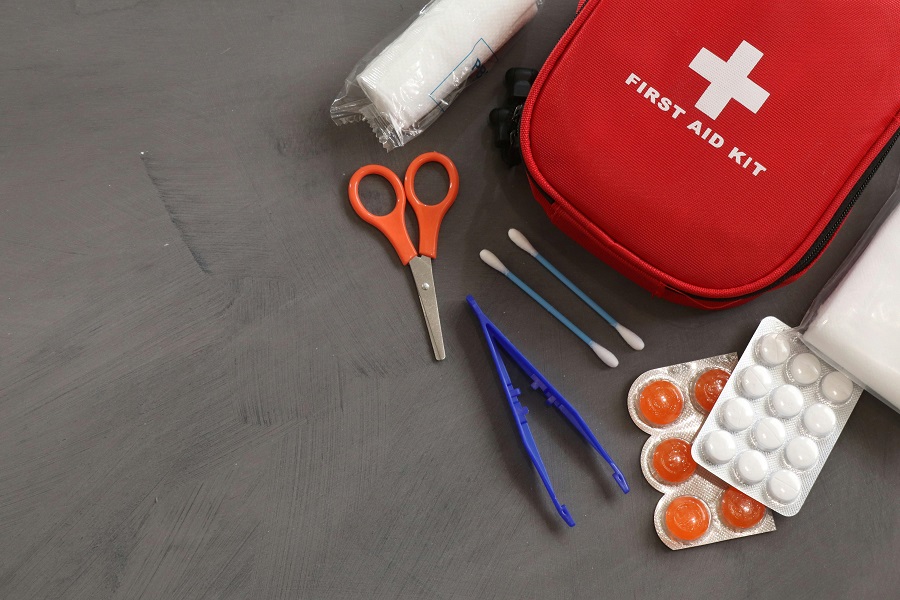
The Delhi government has introduced a new online training programme designed to equip teachers with essential first aid skills to respond effectively during health emergencies in schools.
According to a circular issued by the State Council of Educational Research and Training (SCERT), the course — titled “First Aid – To Improve Human Reaction in Challenging Health Situations” — will be conducted under the Massive Open Online Course (MOOC) format. The training is mandatory for all teachers and will run from October 9 to October 19, 2025.
The initiative aims to increase awareness about the importance of readiness in medical emergencies and the role of first aid in saving lives. It will also educate teachers on maintaining functional first aid kits in classrooms and demonstrate practical methods for administering care in real-life situations.
Teachers must achieve at least 70 per cent in each assessment to complete the course successfully. Upon completion, participants will receive certificates, which can be downloaded directly from the platform.
By introducing this online training, the Delhi government seeks to build a culture of preparedness and safety across schools. With thousands of teachers gaining basic emergency response skills, the initiative is expected to significantly improve the ability of schools to manage sudden health crises and ensure student well-being.
Education
Atal Innovation Mission and IFCCI Join Hands to Scale Up Atal Tinkering Labs Across India
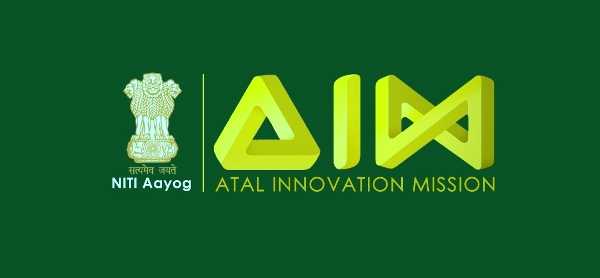
The Atal Innovation Mission (AIM), NITI Aayog, and the Indo-French Chamber of Commerce & Industry (IFCCI) have signed a Statement of Intent (SoI) to strengthen and expand the Atal Tinkering Labs (ATLs) network across India. The agreement, formalised at the French Embassy in New Delhi during IFCCI’s 3rd CSR Connect Day 2025, marks a significant step in fostering STEM education, digital literacy, and innovation among school students.
The event was attended by H.E. Thierry Mathou, Ambassador of France to India, who praised the partnership for deepening Indo-French collaboration in social development. He highlighted that 2026 will mark the India–France Year of Innovation, encouraging businesses from both nations to invest in sustainable, community-driven impact initiatives through Corporate Social Responsibility (CSR).
Through this partnership, IFCCI and AIM aim to mobilise CSR contributions from French and Indian companies to improve infrastructure, enhance hands-on learning experiences, and bridge the gap between industry and education. IFCCI, which has already executed over 86 CSR projects benefiting more than 15,000 people across India, will leverage its network to support ATL expansion, particularly in underserved schools.
Mission Director of AIM, Deepak Bagla, noted that over 11 million students have already benefitted from the ATL initiative, which he called “one of the world’s largest grassroots innovation programs.” He said, “From the northernmost village school to the southernmost, innovation is thriving everywhere. The real story lies not in the scale, but in the creativity of the ideas students are building.”
A Shared Vision for Inclusive Innovation
The collaboration aims to make innovation accessible to all students by promoting digital tools, teacher training, and student challenges that inspire curiosity and problem-solving. IFCCI Director General Payal S. Kanwar added, “This partnership is a step forward in empowering youth with 21st-century skills. We aim to bridge the gap between industry and education and make innovation accessible to every student, especially in underserved regions.”
However, as the Atal Tinkering Labs expand, addressing operational challenges remains crucial. Reports by UNICEF and The New Indian Express underscore that access to digital tools alone cannot guarantee innovation without inclusive design, mentorship, and ethical technology use. UNICEF’s SPARK Labs model, which links creativity with social change, offers a useful reference — encouraging schools to blend innovation with empathy, inclusion, and purpose.
Challenges and Areas for Improvement
Despite the ATL program’s remarkable reach, a 2023 assessment highlighted several gaps. Nearly 58% of ATL teachers lack a STEM background or structured training, resulting in inconsistent mentorship. In many schools, ATL sessions are not integrated into the timetable, limiting daily engagement. Moreover, less than 10% of schools report active student participation due to limited guidance and parental scepticism about its academic value.
Operational hurdles like irregular funding, defective equipment, and poor monitoring systems have also hindered consistent performance. Some schools struggle to maintain labs once initial grants are exhausted, while others lack a mechanism to track outcomes effectively.
The Way Forward
For the AIM–IFCCI partnership to achieve its full potential, a few key steps can strengthen impact:
-
Teacher Capacity Building: Introduce regular certification-based training programs, preferably in collaboration with universities and tech firms.
-
Curriculum Integration: Embed ATL projects within school timetables and link them with existing subjects like science and mathematics.
-
Mentorship Networks: Connect schools with local innovators, start-ups, and CSR professionals for year-round engagement.
-
Monitoring Systems: Deploy digital dashboards to track participation, tool usage, and project outcomes for better transparency.
-
Community Awareness: Conduct parent and community outreach sessions to showcase how tinkering enhances academic learning and future employability.
If executed effectively, this Indo-French collaboration can redefine India’s innovation ecosystem by turning every school into a space where curiosity meets creation. The challenge now lies in ensuring that every student, regardless of background, not only has access to a lab but also the guidance and confidence to build something meaningful within it.
-
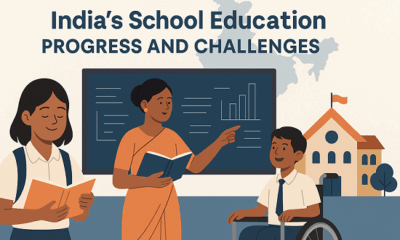
 Education3 months ago
Education3 months agoBeyond the Numbers: Reading Between the Lines of UDISE+ 2024–25
-
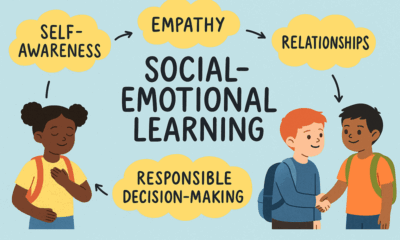
 Edutainment3 months ago
Edutainment3 months agoWeaving Social-Emotional Learning into the Curriculum
-

 Education3 months ago
Education3 months agoEducation with Purpose: Shaping Responsible Learners for a Better Tomorrow
-
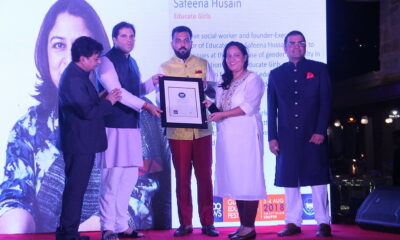
 Education3 months ago
Education3 months agoEducate Girls Becomes First Indian NGO to Win the Ramon Magsaysay Award
-
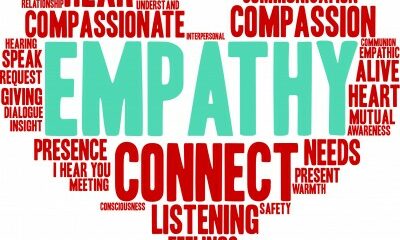
 Education3 months ago
Education3 months agoEmpathy as a 21st-Century Competency: Developing Emotional Intelligence among Students
-
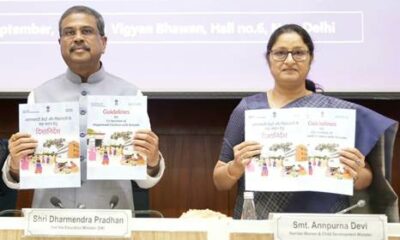
 Education3 months ago
Education3 months agoMoWCD and MoE Release Guidelines for Co-location of Anganwadi Centres with Schools
-

 News3 months ago
News3 months agoSC Seeks Centre’s Response on PIL for Transgender-Inclusive School Textbooks
-
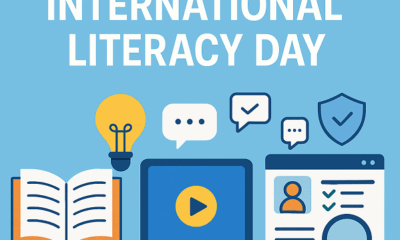
 Education2 months ago
Education2 months agoInternational Literacy Day 2025: Beyond Reading and Writing in the Digital Era
-

 Education2 months ago
Education2 months agoUK and US Tighten Student Visas: What Indian Schools and Students Must Know
-
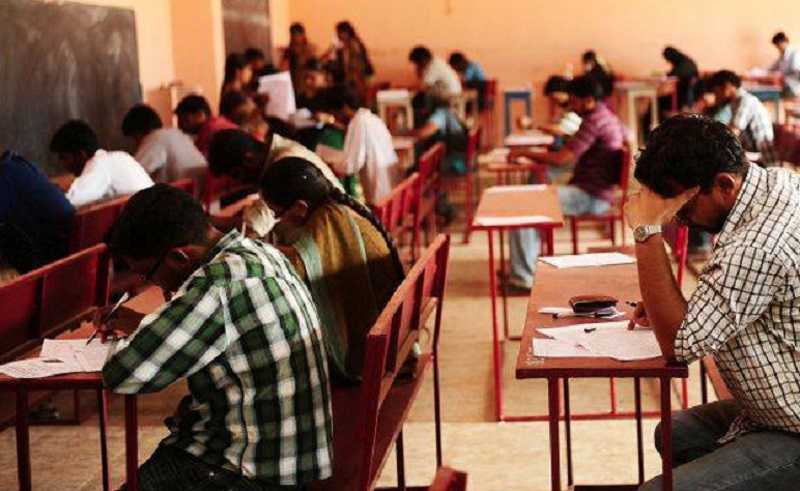
 Education2 months ago
Education2 months agoNational Task Force Calls for Wider Participation in Surveys on Student Well-being and Suicide Prevention









